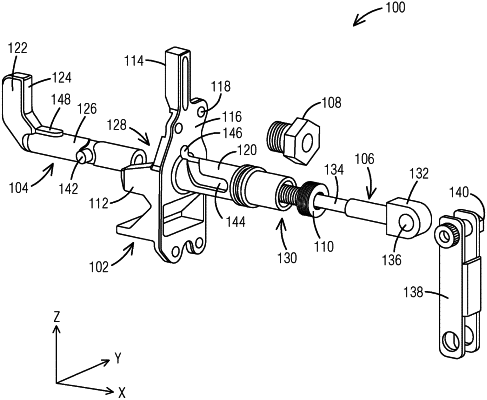| CPC B61G 7/00 (2013.01) [B61L 15/0054 (2013.01)] | 20 Claims |

|
1. An apparatus for mounting an attachment structure to a railroad coupler, the apparatus comprising:
a base comprising a first clamp face, a mounting portion for the attachment structure and an elongated sleeve extending from the mounting portion, the sleeve being insertable through attachment structure,
a locking member comprising a hook defining a second clamp face and a lock shaft extending from the hook, the lock shaft being hollow for at least a portion of the length thereof and insertable through a first end of the of the sleeve adjacent the mounting portion,
a bolt comprising a bolt head and a bolt shaft, the bolt shaft being insertable through a second end of the sleeve opposite the first end and configured to be in threaded engagement with an inner surface of the hollow portion of the lock shaft after the lock shaft is inserted through the first end of the sleeve,
wherein the locking member is configured to be rotated from an unlocked position to a locked position by torque applied via the bolt head, whereby the locking member is pulled inside the sleeve and the second clamp face aligns with the first clamp face to clamp a portion of the railroad coupler therebetween,
one or more spring elements configured to be compressible by relative movement between the bolt and the base responsive to the applied torque, to produce a clamping force between the first and second clamp faces, and
a first surface and a second surface, the first and second surfaces being arranged such that compression of the one or more spring elements causes the first surface to mechanically engage with the second surface to generate a mechanical torque that opposes the applied torque.
|